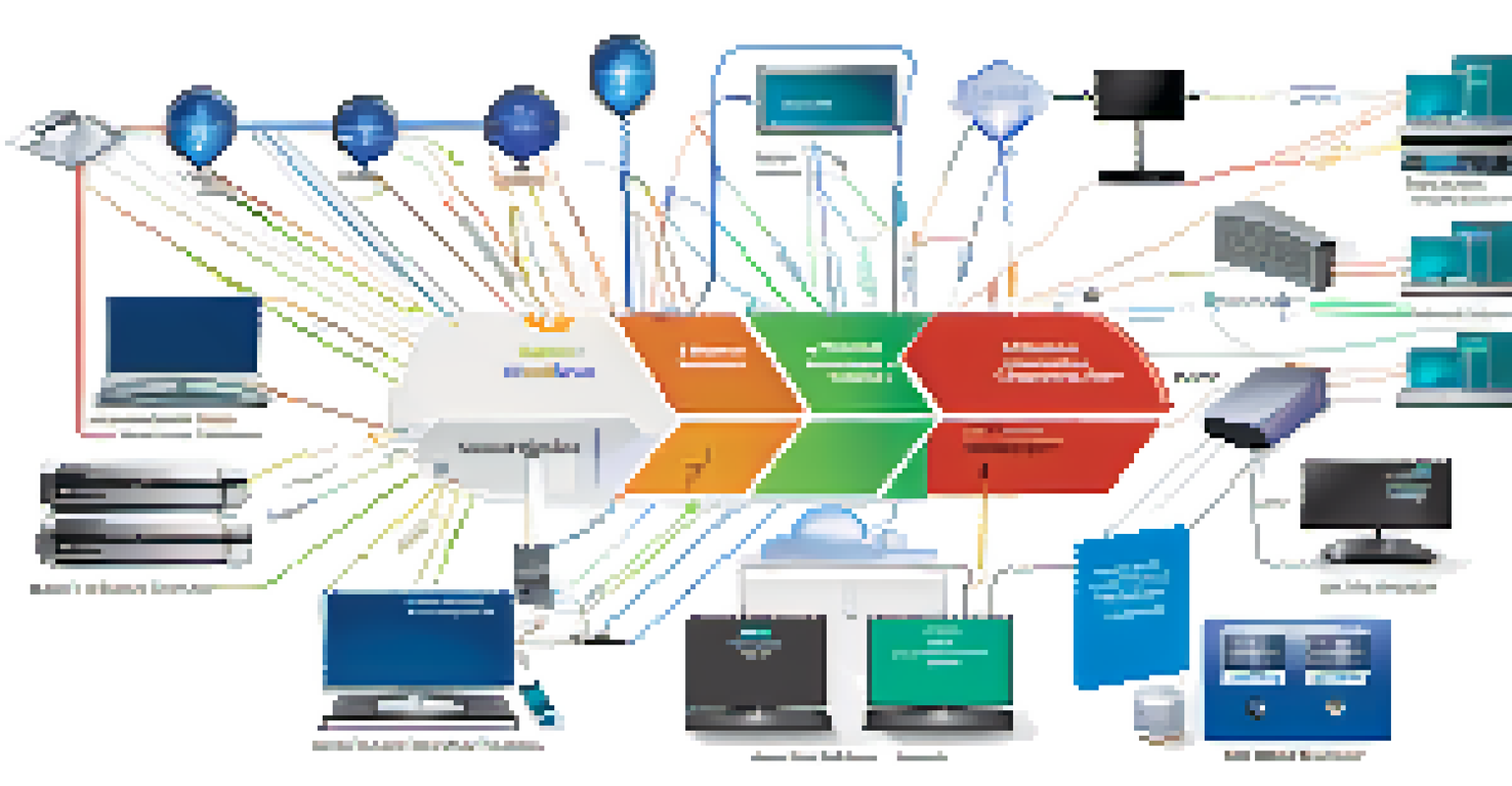Securing IoT Devices: Best Practices for a Connected World

Understanding the Risks of IoT Devices in Daily Life
As our homes and workplaces become smarter, the Internet of Things (IoT) presents both convenience and risk. Each connected device, from smart thermostats to security cameras, can be a potential entry point for cybercriminals. Understanding these risks is crucial for anyone using IoT technology.
The Internet of Things is not a trend; it is a way of life.
Many users may not realize that even seemingly harmless devices can harbor vulnerabilities. For example, an unsecured smart fridge might not just store your food but could also be hacked to access your home network. This highlights the need for awareness about the security implications of every connection we make.
By recognizing the risks associated with IoT devices, we can take proactive steps to secure them. Just as we lock our doors to keep intruders out, we must also safeguard our digital environments to ensure our privacy and safety.
Change Default Passwords for All IoT Devices
One of the simplest yet most effective security measures is changing default passwords. Many IoT devices come with factory-set passwords that are easy for hackers to guess or find online. By creating a strong, unique password for each device, you significantly reduce your risk of unauthorized access.

Think of your device's password as a key to your home. Would you leave your front door unlocked with a generic key that anyone could use? Similarly, a strong password acts as a barrier, keeping your devices and data safe from prying eyes.
Change Default Passwords
Creating strong, unique passwords for IoT devices significantly reduces the risk of unauthorized access.
Moreover, consider using a password manager to help generate and store complex passwords. This way, you can ensure that each device has a unique password, making it even harder for cybercriminals to breach your security.
Regularly Update Device Firmware and Software
Keeping your IoT devices updated is crucial for maintaining security. Manufacturers often release firmware updates that fix vulnerabilities and improve performance. Neglecting these updates can leave your devices exposed to known threats.
Security is not a product, but a process.
Imagine your IoT device as a car that requires regular maintenance. Just as you wouldn't skip an oil change or tire rotation, you shouldn't ignore firmware updates. Regularly checking for updates ensures that your devices are running the latest security patches.
Setting up automatic updates can simplify this process. By allowing your devices to update automatically, you can ensure they are always equipped with the latest defenses, reducing the risk of being targeted by cyberattacks.
Utilize Strong Encryption for Data Transmission
Encryption acts like a secret language that only you and your intended recipients can understand. When IoT devices transmit data, using strong encryption protocols helps protect this information from being intercepted by malicious actors. Without encryption, your data could be easily accessed by anyone monitoring the network.
Consider sending a postcard versus a sealed letter. A postcard can be read by anyone who comes across it, while a sealed letter keeps your message private. In the digital world, encryption is the equivalent of sealing your letter, ensuring that your personal data remains confidential.
Keep Devices Updated
Regularly updating firmware and software is essential for protecting IoT devices from known vulnerabilities.
When setting up your devices, always opt for those that support encrypted communication standards. Look for features like WPA3 for Wi-Fi networks or TLS (Transport Layer Security) for data transmission to enhance your security.
Segment Your Network for Enhanced Security
Network segmentation involves dividing your network into smaller, manageable sections. By placing IoT devices on a separate network from your primary devices, you can limit the potential impact of a security breach. If one device is compromised, the others remain safe from exposure.
Think of it as having different rooms in your house. If one room gets messy, the rest of the house can still be tidy and functional. Similarly, segmenting your network helps contain potential threats and protects your sensitive information.
Setting up a guest network for IoT devices can be an effective way to implement segmentation. This creates a barrier between your main network and the devices that are more susceptible to attacks, enhancing your overall security.
Monitor and Audit Your IoT Devices Regularly
Regular monitoring of your IoT devices can help you identify unusual activity that may indicate a security breach. Keeping an eye on device logs and usage patterns helps you stay aware of any unauthorized access attempts. Just like a vigilant homeowner keeps an eye on their property, proactive monitoring is key to safeguarding your digital assets.
Utilizing security software that provides alerts for suspicious activities can enhance your monitoring efforts. This way, you'll receive notifications if something seems off, allowing you to take prompt action.
Educate on IoT Security
Staying informed about IoT security practices and sharing knowledge with others enhances community safety.
Additionally, conducting periodic audits of your devices can help ensure they are still secure. Checking for outdated software, unusual connections, or unrecognized devices can provide insights into your overall security posture and help you address vulnerabilities.
Educate Yourself and Others on IoT Security
Knowledge is power, especially when it comes to securing IoT devices. By educating yourself about the latest security practices and potential threats, you can make informed decisions that protect your devices and data. Sharing this knowledge with family and friends can create a ripple effect, enhancing overall security in your community.
Consider attending workshops, reading articles, or participating in online forums focused on IoT security. The more you learn, the better equipped you will be to safeguard your devices against evolving threats.

Empowering others with this knowledge fosters a culture of security awareness. Just as we teach our loved ones to lock doors and be cautious of strangers, we should also encourage them to prioritize digital safety in this connected world.